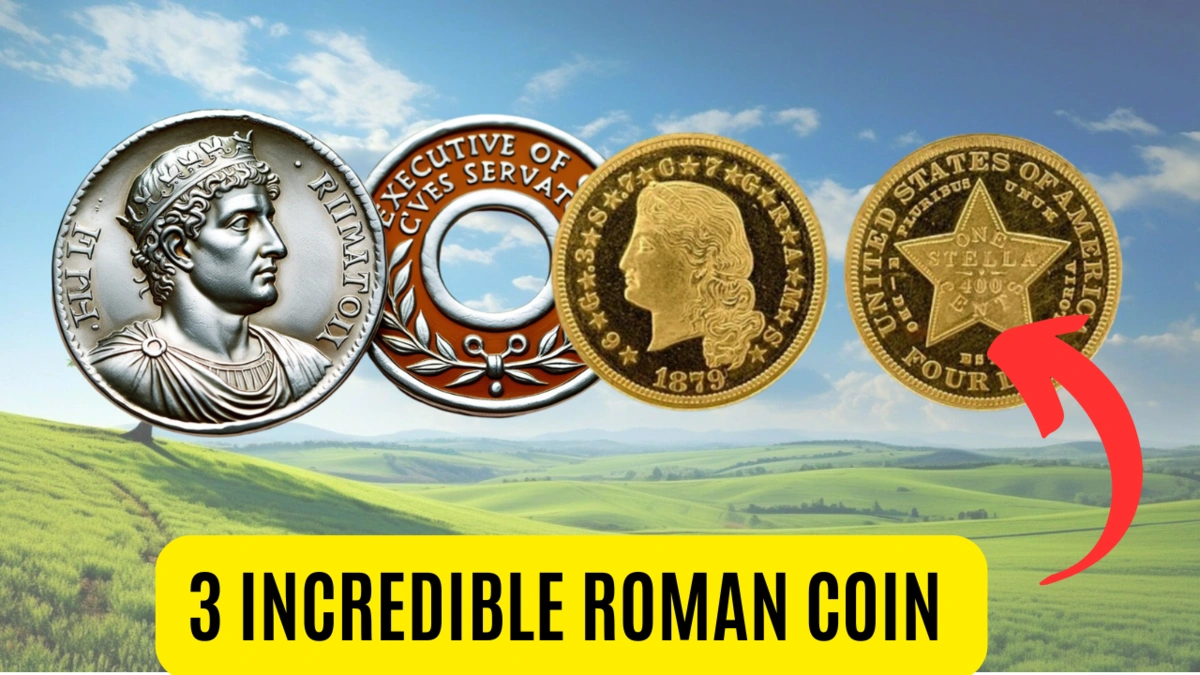Roman coins have long captivated historians and collectors alike, offering a window into the economic, cultural, and political life of ancient Rome. Recently, a series of archaeological finds has provided fresh perspectives on these coins, revealing surprising truths that challenge our previous understanding of the ancient world.
1. Roman Coin Hoard Unearthed in Claterna
In November 2023, a team of archaeologists working at the ancient Roman city of Claterna, located near Bologna, Italy, made a groundbreaking discovery. They uncovered a treasure trove of over 3,000 Roman coins and 50 engraved gems. This find has led experts to dub Claterna as the “Pompeii of the North,” emphasizing its importance as a bustling trade center with strong ties to Rome.
Key Highlights:
- Coins and Artifacts: The hoard primarily consists of silver and bronze coins, including a rare silver quinarius dating back to 97 BCE. These coins were found within the remains of a recently uncovered theater.
- Cultural Insights: The engraved gems feature depictions of Roman deities, offering valuable insights into the religious practices and artistic expressions of the time.
- New Understanding of Claterna: This discovery challenges the previous view of Claterna as merely a transit town, instead highlighting its critical role as a major trading hub within the Roman Empire.
2. Massive Roman Coin Hoard Found Off Sardinia’s Coast
In another thrilling find, an underwater archaeological expedition off the northeast coast of Sardinia in November 2023 unearthed an estimated 30,000 to 50,000 Roman bronze coins, known as folles. This discovery stands as one of the most significant numismatic finds in recent history.
Key Highlights:
- Size and Scope: The sheer number of coins is staggering, far surpassing previous discoveries, including the 2013 Seaton Down hoard, which contained just over 22,000 folles.
- Exceptional Preservation: The coins are exceptionally well-preserved, with clear inscriptions that will help researchers gain valuable insights into the Roman economy.
- Economic Insights: This monumental find opens a new chapter in understanding the Roman Empire’s vast maritime trade networks and economic structure.
3. The Worcestershire Conquest Hoard
In December 2024, construction workers near Worcester, England, stumbled upon one of the largest collections of Roman coins ever found in Britain. The Worcestershire Conquest Hoard, valued at over £100,000, includes 1,368 Iron Age and Roman coins dating between 157 BCE and 68 CE.
Key Highlights:
- Diverse Collection: The hoard contains a mix of predominantly silver denarii, along with a rare gold Iron Age stater from the Dobunni tribe.
- Historical Context: The discovery is believed to have belonged to a wealthy farmer who was likely involved in supplying the Roman army. This provides an intriguing glimpse into the economic relationships between the Roman invaders and the local Britons.
- Roman Britain Wealth: The hoard sheds light on the wealth in Roman Britain and offers direct evidence of interactions between the Roman forces and the local economy.
Summary of the Discoveries
| Discovery Site | Date | Number of Coins | Notable Finds | Significance |
|---|---|---|---|---|
| Claterna, Italy | Nov 2023 | 3,000+ | Rare silver quinarius; engraved gems of deities | Redefines Claterna as a major trading center |
| Sardinia’s Coast | Nov 2023 | 30,000-50,000 | Well-preserved bronze folles with legible inscriptions | Illuminates Roman maritime trade networks |
| Worcester, England | Dec 2024 | 1,368 | Silver denarii; rare gold Iron Age stater | Offers insight into Roman Britain’s economy |
FAQs
What materials were Roman coins made from?
Roman coins were typically minted from gold (aureus), silver (denarius), bronze (as), and later copper alloys (follis).
What is a quinarius?
A quinarius is a rare silver coin worth half of a denarius, introduced during the Roman Republic.
Why are Roman coin hoards important?
Roman coin hoards offer valuable insights into the economic systems, trade networks, and historical events of the Roman Empire.
What is a follis?
A follis is a large bronze coin that was introduced during the later stages of the Roman Empire and often had a thin silver coating.
How do archaeologists date Roman coins?
Coins are typically dated based on inscriptions, the portraits of emperors, and mint marks, which are then cross-referenced with historical records.



